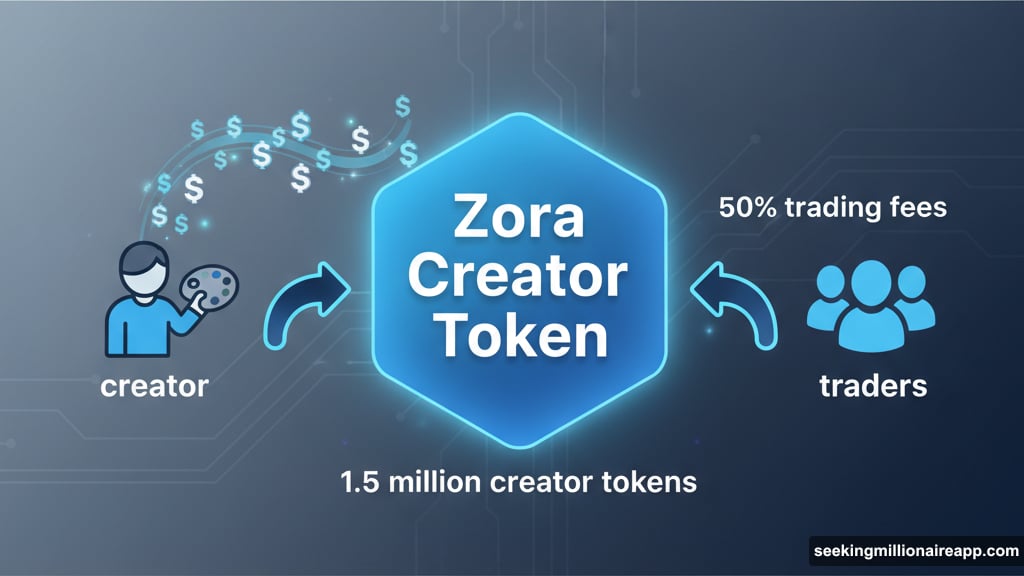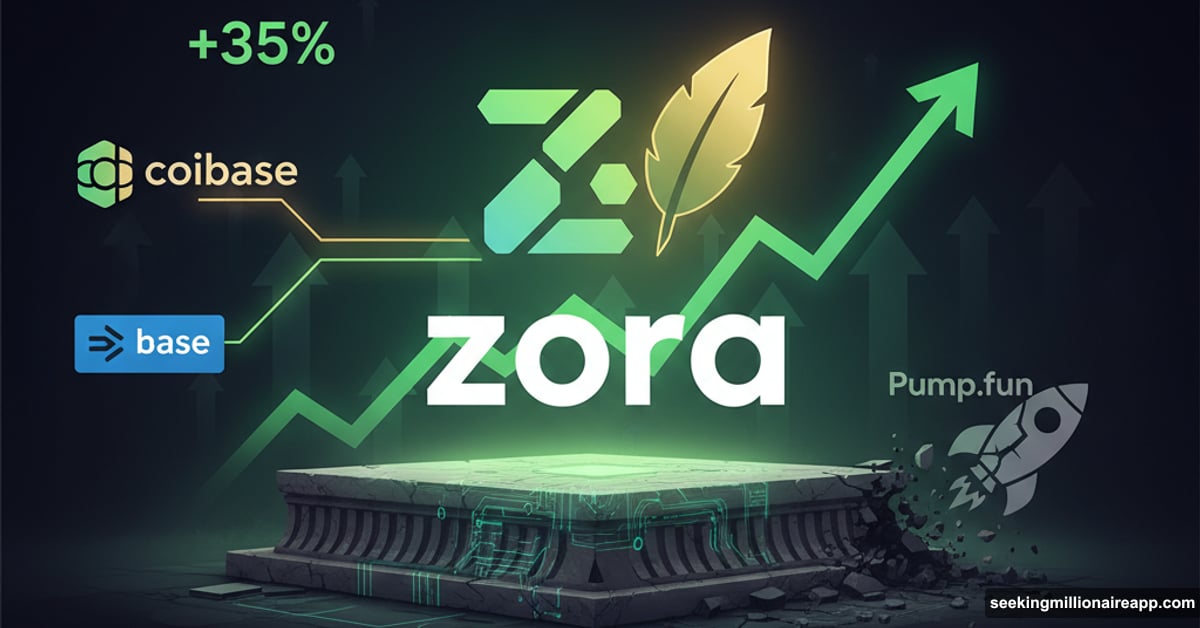Zora’s Robinhood listing changes everything. What looked like a distant rivalry turned into a creator-economy dominance play overnight.
The token surged 35% after the announcement. But that’s not the real story. Zora just gained what Pump.fun desperately needs but can’t get: institutional trust and regulatory legitimacy.
Retail Access Changes the Game
Robinhood opened the floodgates. Millions of mainstream traders can now buy ZORA directly through a regulated platform.
Pump.fun lives entirely in crypto-native circles. That’s fine for degens. But creators building sustainable businesses need different infrastructure. They need compliance. They need custody. They need the boring stuff that makes real money flow.
The timing matters. Toncoin proved this playbook works. Its Robinhood listing brought mainstream attention that DeFi platforms couldn’t match. Now Zora follows the same path with better fundamentals underneath.
Coinbase already supports ZORA. Plus, the Base network integration means every token minted on Zora flows through Coinbase’s ecosystem. So this isn’t just one exchange listing. It’s full institutional integration.
Creator Economics Actually Work Here
Here’s where Zora separates from the meme coin casino. Creators earn 50% of trading fees on their tokens.
That’s huge. Someone mints a profile token. Every time people trade it, the creator gets paid. Not once. Forever. This creates actual incentive alignment instead of pump-and-dump dynamics.
Pump.fun keeps all platform fees to buy back PUMP tokens. Good for PUMP holders. Bad for creators trying to build sustainable income. The platform extracts value instead of sharing it.
Zora processed over $420 million in trading volume across 1.5 million creator tokens. Those aren’t speculative meme coins. They’re digital assets tied to actual creators, posts, and communities. The difference matters when regulators start asking questions.
Base Network Amplifies Everything
Coinbase’s Base Layer 2 gives Zora unfair advantages. The network rebrand incorporated Zora’s tokenization system directly into the infrastructure.
Daily token distributions doubled recently. That’s not marketing hype. That’s network effects from being embedded in Base’s core functionality. Every new Base user gets exposed to Zora’s creator tokens automatically.
The Coinbase DEX now trades Base tokens. Many of these originated through Zora. So creators get instant liquidity without leaving the Coinbase ecosystem. They mint on Zora. Trade on Coinbase DEX. Cash out through Coinbase. All compliant. All regulated.
Pump.fun can’t offer this. No custody solution. No regulated exchange integration. No Layer 2 network with institutional backing. Just a Solana dApp that might disappear if regulators crack down.
Institutional vs Degen: Different Markets
Pump.fun still wins on raw revenue. It’s the reigning champion of speculative token launches. That business prints money during bull markets.
But Zora targets creators who want multi-year businesses. Musicians. Artists. Writers. Influencers who need sustainable income, not lottery tickets. These users care about compliance. They want platforms their accountants understand.
The SEC recently approved Coinbase as a qualified custodian for digital assets. That matters more than most people realize. It means institutional money can flow into Base ecosystem tokens through compliant channels. Zora benefits directly from this regulatory clarity.

Meanwhile, Solana faces ongoing questions about token distribution and SEC classification. Those issues might resolve favorably. Or they might blow up spectacularly. Either way, it’s uncertainty that institutional partners avoid.
Three Reasons Zora Wins Long-Term
First, regulatory moats matter. Coinbase spent years building relationships with regulators. Zora inherits all that trust by building on Base and integrating with Coinbase products.
Second, creator retention beats user acquisition. Pump.fun users chase quick flips. Zora creators build audiences. One approach scales with hype cycles. The other compounds over years.
Third, network effects favor infrastructure platforms. As Base grows, Zora grows. As more creators mint tokens, more traders show up. As more traders arrive, more creators launch. This flywheel accelerates once it starts spinning.
Pump.fun relies on Solana’s success. Zora drives Base’s success while benefiting from it. That’s the difference between being a customer and being infrastructure.
The Boring Stuff Wins
Nobody thought regulatory compliance and institutional integration would beat pure speculation. Yet here we are.
Zora isn’t sexier than Pump.fun. It’s just better positioned for survival. When the next bear market arrives, regulated platforms with institutional backing don’t disappear. Unregulated DeFi protocols often do.
Creators understand this instinctively. They’ve watched platforms come and go. The ones that survive integrate with traditional finance. The ones that die stay isolated in crypto bubbles.
So the 35% pump isn’t speculation. It’s recognition that Zora just crossed a legitimacy threshold Pump.fun probably never will. The race isn’t over. But Zora moved into a different competition entirely.
